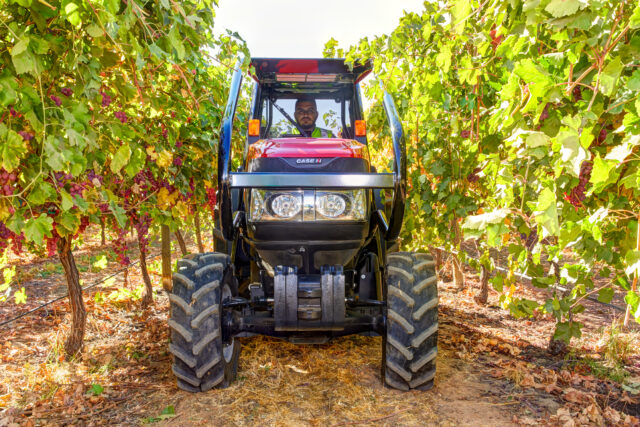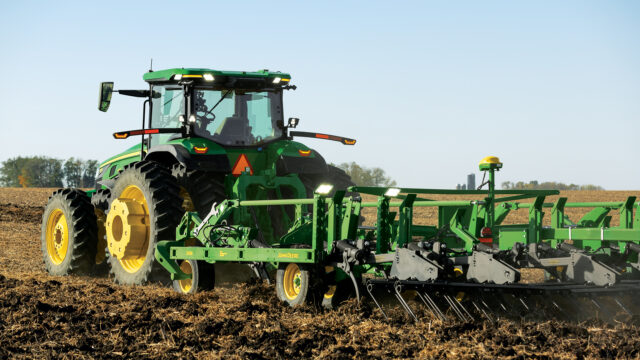Artificial intelligence, robotics and advanced sensor technology will reinvent vineyard management … eventually.
By Jeff Siegel
Grape growing is a traditional business, parts of which haven’t changed in thousands of years. Picking grapes by hand is still picking grapes by hand. The lore of the grape runs deep.
So why have California growers enthusiastically embraced robotics in the vineyard?
“I think the surprise isn’t that robotics came to the vineyard later than other agriculture, such as corn and soybeans,” says Kaan Kurtural, Ph.D., an associate cooperative extension specialist in viticulture at UC Davis, who works at the university’s Oakville research station. “The surprise is that grape growers have embraced robotics so enthusiastically. I think everyone thought it would take decades, but it’s really only taken years.”
High demand for vineyard help
Robotics encompasses a variety of new technologies, including drones mapping vineyards and ground sensors fine-tuning irrigation, among others. The idea, say agriculture robotics experts, is to eventually attain the “hands off” vineyard, where machines can do almost all the work without the need for a human to do much more than check the results. The key to this, say the experts, is the autonomous tractor, which doesn’t require a human driver but can perform all the same tasks as a tractor with someone in the cab. Developments in artificial intelligence (AI) will give the tractor the ability to “think” to accomplish these jobs.
“One of the things we did before we started was to make sure there was a demand for what we wanted to do,” says Igino Cafiero, the CEO and founder of Bear Flag Robotics in Newark, Calif., which was acquired by John Deere in 2021. “We found that all the companies we talked to, including the biggest, wanted to see this [technology advance]. They saw what robotics could do for them.”
A wide open field
Most of the world’s biggest farm equipment manufacturers are expanding their autonomous tractor efforts, says Greg Lucey, marketing manager for Farmall Tractors, part of Case IH Agriculture. “It’s about special tools for specialty crops,” he says, noting that orchards and vineyards require different approaches than soy, wheat and corn, for example. “We’re still developing more technology for tractors, because that’s what [growers are] asking for out there.”

The developments, coming from a variety of manufacturers around the world, includes Case IH’s cabless, autonomous tractor; a venture announced this year by Japan’s Kubota to deploy AI-powered grape harvesting machinery; French Naio Technologies debuting an assortment of what it calls “weeding robots”; as well as even smaller companies. For instance, a French company called Traxx is working on robots that will till and spray vineyards.
John Deere debuted its autonomous tractor, called the 8R, at the Consumer Electronics Show in Las Vegas earlier this year. It can be activated by smartphone and uses six pairs of stereo cameras and sensors to navigate terrain, as well as machine learning to detect objects and avoid collisions.

The company has made substantial investments in robotics; in addition to the Bear Flag purchase, it formed a joint venture with GUSS Automation in Kingsburg, Calif., earlier this year. UC Davis’ Kurtural says GUSS has impressed growers with its pioneering Global Unmanned Spray System (hence the company’s name), a semi-autonomous orchard and vineyard sprayer. Multiple GUSS sprayers can be remotely supervised by a single operator, who doesn’t necessarily have to be in the field with each machine.
In all of this, says Cafiero, the goal is to cut costs and improve efficiency by reducing the need for human labor. “This is a killer use-case for high value crops like winegrapes,” says Cafiero. “It will let growers do more with less and unlock so much more potential.”
Full automation on the horizon
Currently, many AI systems require the operator, often using something as simple as a cell phone app, to maneuver the machines. Eventually, says Cafiero — though not yet, and probably for orchards before vineyards — the operator should be able to program an autonomous robot for specific tasks (such as spraying, pruning or even picking) and the machine will complete the task using the proper attachments and tools without supervision. The operator could check in to see what’s going on, but the goal would be to “teach” the robot to do the specific job on its own.

One stumbling block: A June ruling by California regulators that denied a petition to relax state law that requires tractors to have human drivers. Still, if development continues as expected, an autonomous tractor will be able to collect data such as soil moisture, brix levels and weed growth as it passes through the vineyard doing something else. After sending that information to the grower, the tractor can be re-programmed and re-equipped with the proper attachments to deliver water, spray or mow (whatever’s necessary) — without expending manpower in the vineyard. Which, given the scarcity and the high cost of labor in California vineyards, is a powerful motive and explains why growers in the Golden State are so eager to embrace this technology.
__________________________________________________________
 Jeff Siegel
Jeff Siegel
Jeff Siegel is an award-winning wine writer, as well as the co-founder and former president of Drink Local Wine, the first locavore wine movement. He has taught wine, beer, spirits, and beverage management at El Centro College and the Cordon Bleu in Dallas. He has written seven books, including “The Wine Curmudgeon’s Guide to Cheap Wine.”




